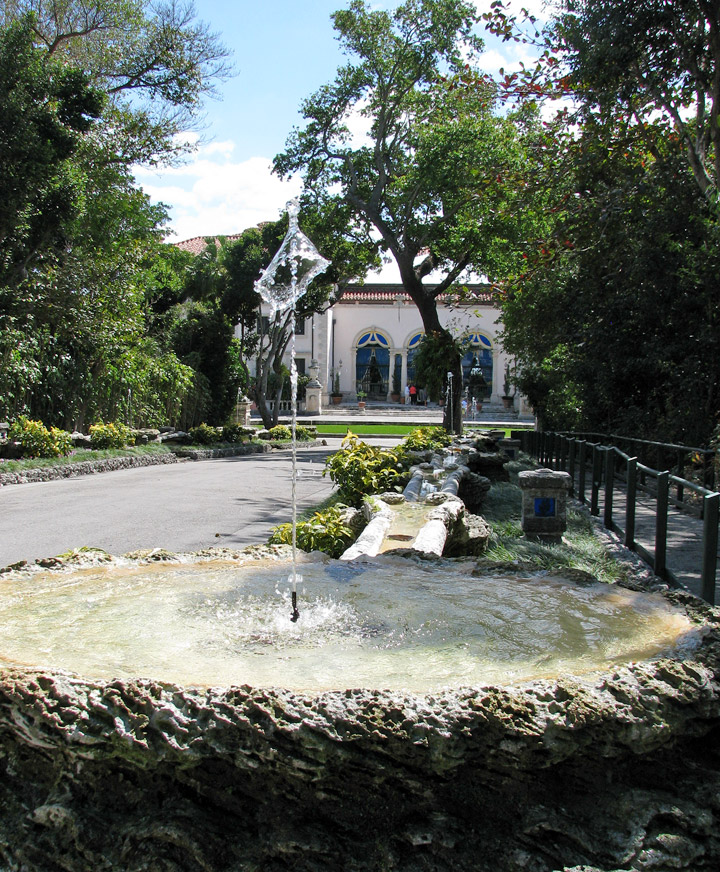

Vizcaya
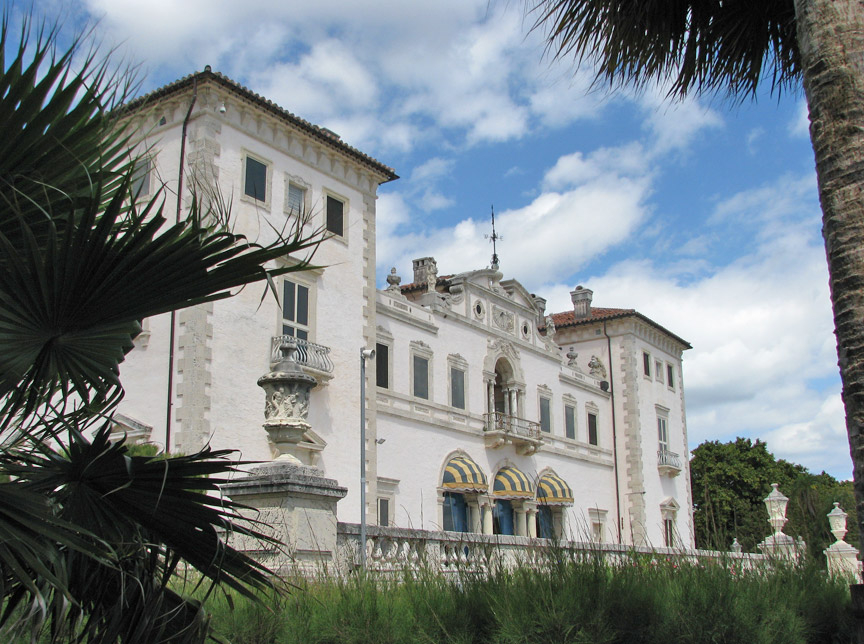
Vizcaya

Vizcaya is an estate or villa in a North Italian sixteenth-century style on Biscayne Bay in Miami, Florida, designed for James Deering as a winter residence. The estate originally consisted of 180 acres, including the main house, formal gardens, extensive lagoon gardens, and a village that serviced the property. The main house was built between 1914 and 1916, while the construction of the complicated gardens and the village continued into the early 1920s. During these latter years labor and materials were difficult to acquire as a result of World War I. Vizcaya is noteworthy for adapting European cultural traditions to Miami's subtropical landscape. The house, for example, combines European marble and Floridian limestone while the Italianate gardens rely on plants capable of thriving in Miami's climate.
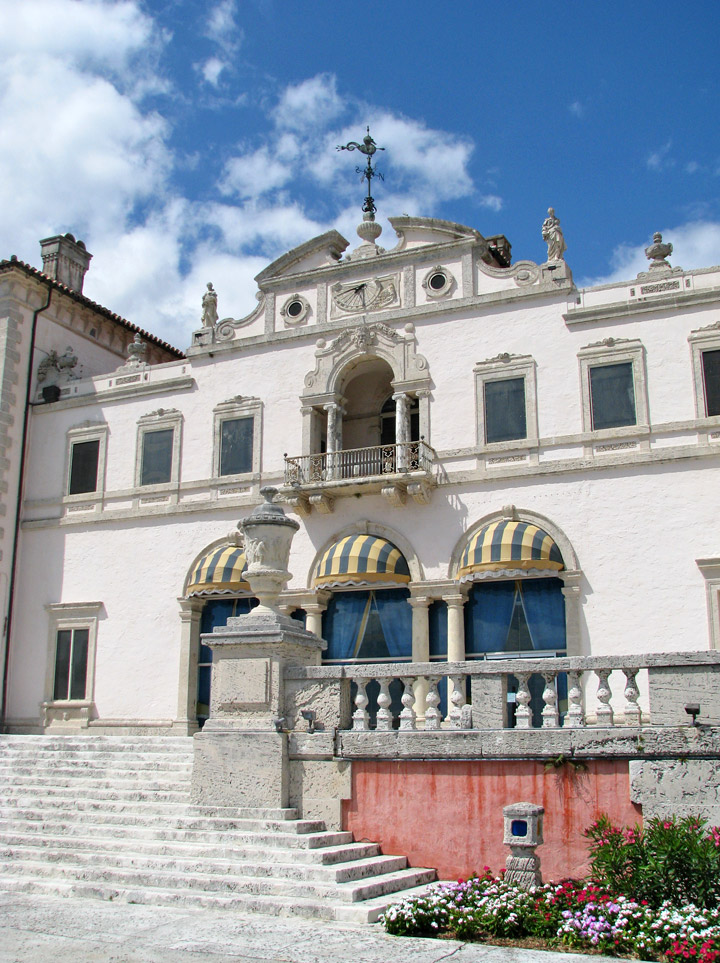
Deering used Vizcaya from 1916 to the time of his death in 1925. Deering's
advisor in creating the estate was Paul Chalfin, a curator and decorative
painter who helped Deering assemble artworks and architectural elements for the
project. Chalfin recommended the architect F. Burrall Hoffman to design the
house and other buildings on the property. The gardens were designed by the
landscape architect Diego Suarez.
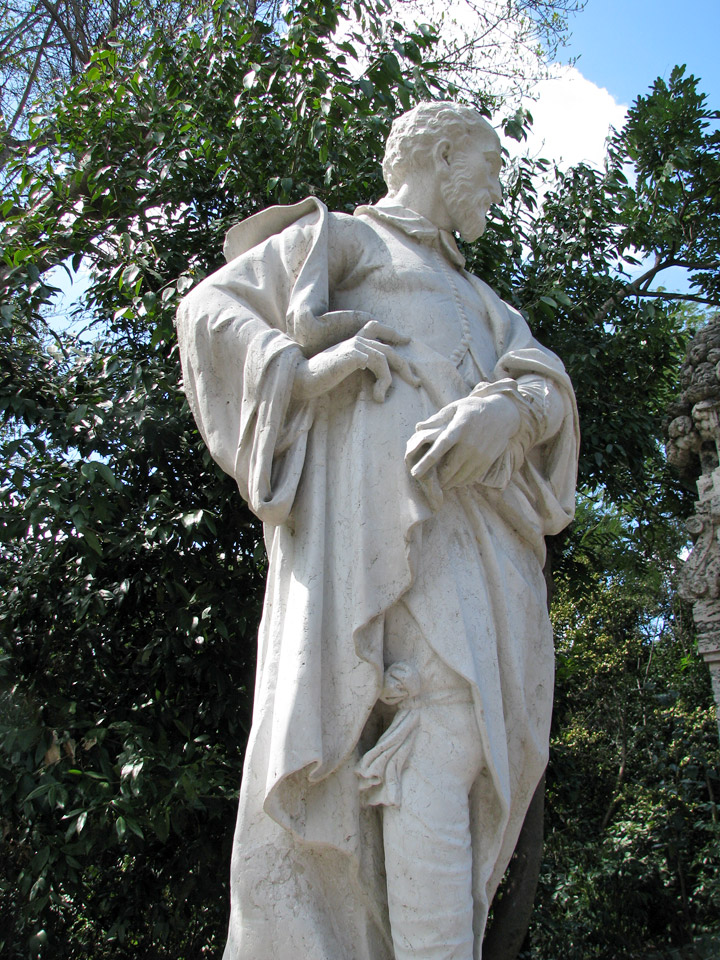
Ponce De Leon
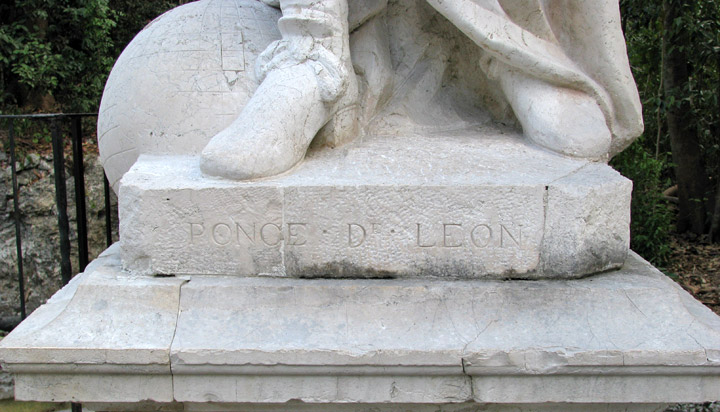
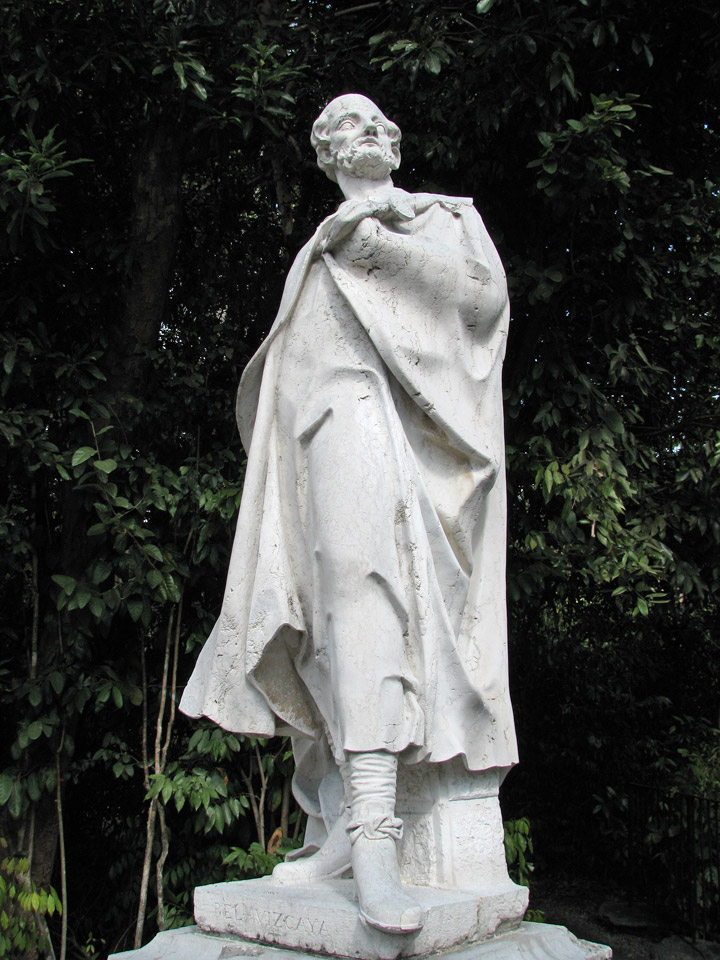
Bel Vizcaya
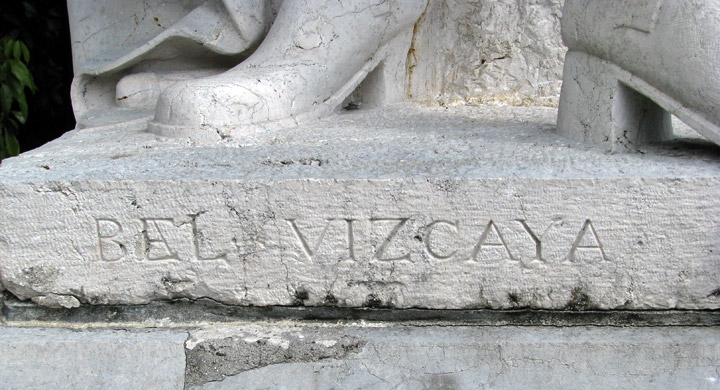
The name Vizcaya is derived from the Basque province of the same name, which overlooks the Bay of Biscay as Vizcaya overlooks Biscayne Bay. Records indicate that Deering wanted to perpetuate the notion that Vizcaya was a mythical explorer and he favored the caravel (a ship associated with the Age of Exploration) as one of Vizcaya's primary symbols. It is also said that Vizcaya means "an elevated place" in Basque). A representation of the mythical explorer "Bel Vizcaya" welcomes visitors at the entrance to the property.
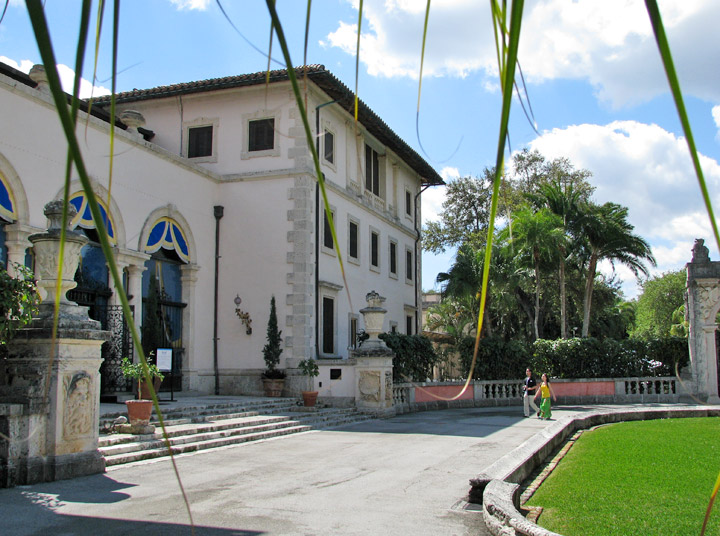
Vizcaya's main house is a composite of many different Italian villas based on research done by Chalfin and others. The house most closely resembles the Villa Rezzonico at Bassano del Grappa. It is sometimes referred to as the "Hearst Castle of the East".
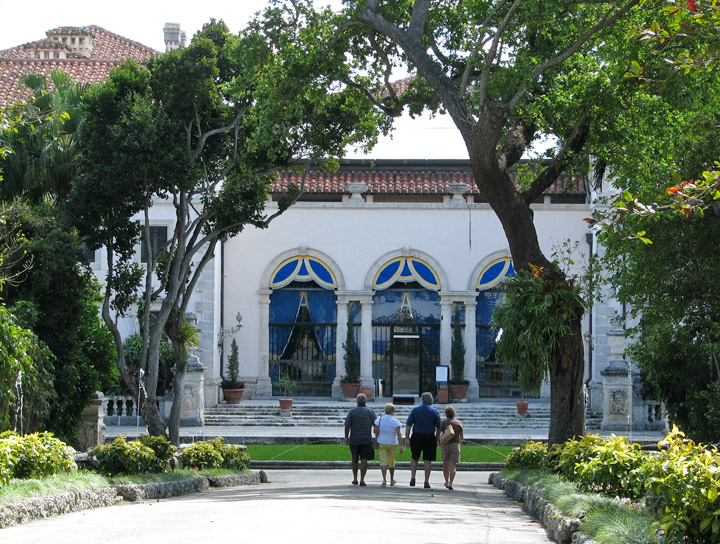
Park entrance
In 1945, Deering's descendents conveyed significant portions of the Vizcaya
property to the Archdiocese of St. Augustine, Florida, and to Mercy Hospital.
Approximately 50 acres, comprising the main house, the formal gardens, and the
village remained. These were conveyed to Miami-Dade County in multiple
transactions, with the County acquiring the main house and gardens, then in
decline, for $1 million in revenue bonds and Deering's heirs donating the
furnishings and art to the County, and the village and remaining property
acquired by the County in the mid-1950s. Vizcaya opened to the public in 1953 as
the Dade County Art Museum. In 1994 it was designated a National Historic
Landmark.

boat landing
It later became the Vizcaya Museum and Gardens, which consists of the main house
and its formal gardens, and most of the house's original collections. The former
estate covers over 50 acres (200,000 m2), of which 10 acres (40,000 m2) contain
the formal botanical gardens. The museum contains over 70 rooms decorated with
numerous ancient artifacts but dominated by 15th through early 19th century
furnishings and European decorative art. Currently owned by Miami-Dade County
and governed by the Vizcaya Museum and Gardens Trust (formed in 1998), Vizcaya
is located at 3251 South Miami Avenue in Coconut Grove neighborhood of Miami, it
is open to the public daily except for Christmas Day. It has been accredited by
the American Association of Museums.

Vizcaya is currently in the midst of a major capital program to refurbish the
estate. In 2004, Miami-Dade County allocated $50 million toward the
rehabilitation of Vizcaya. Plans include restoration of the main house and
gardens and conversion of the historic village into exhibition, education, and
service spaces.
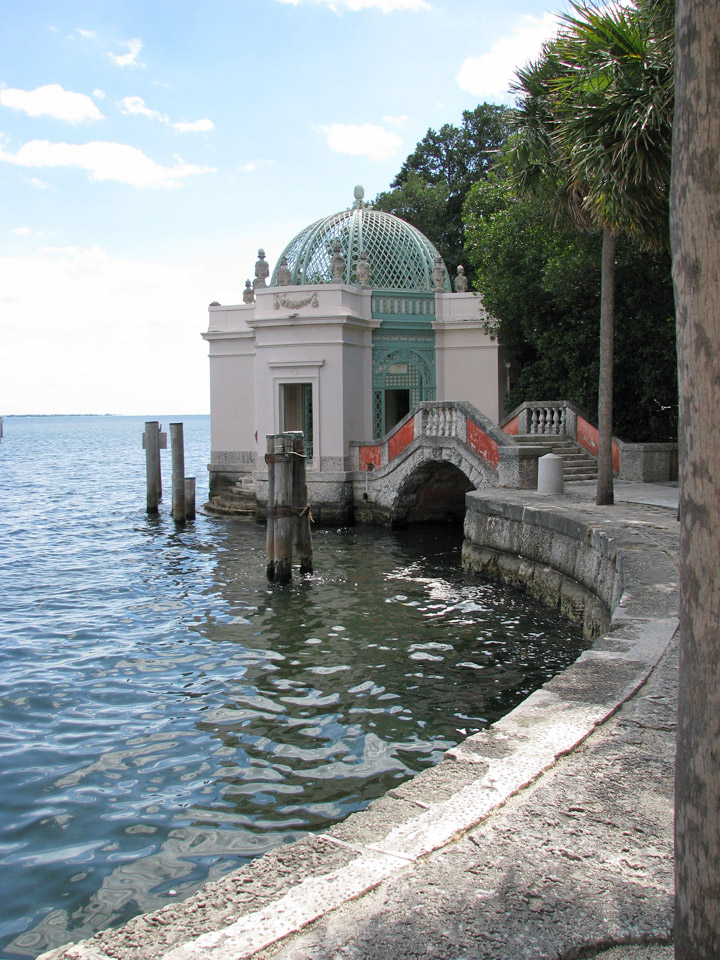
In May 2008 the National Trust for Historic Preservation listed Vizcaya on their
list of America's 11 Most Endangered Places. This designation was based on the
threat of proposed high rise development on neighboring property.
Text from Wikipedia

at the auto entrance
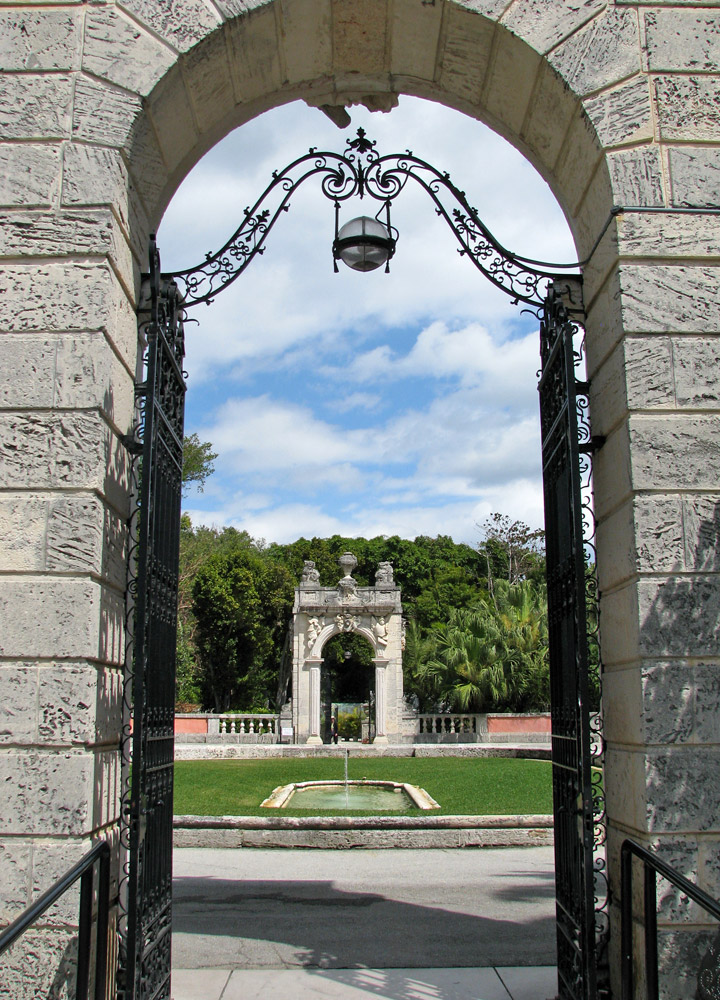
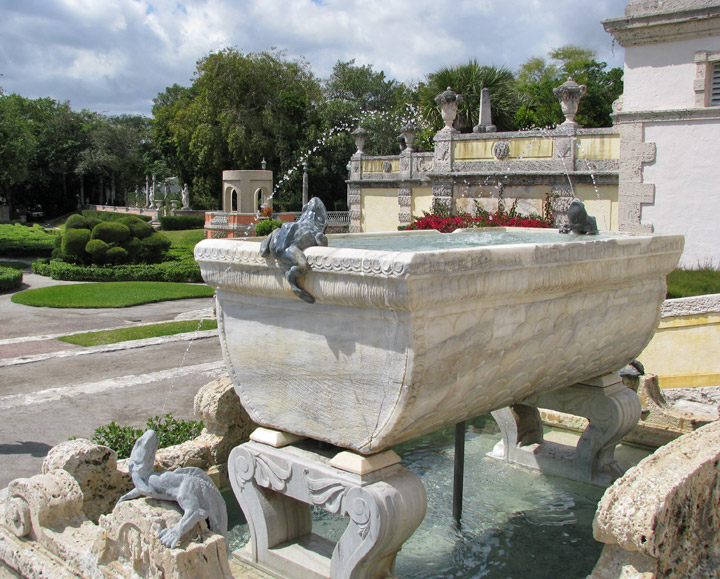
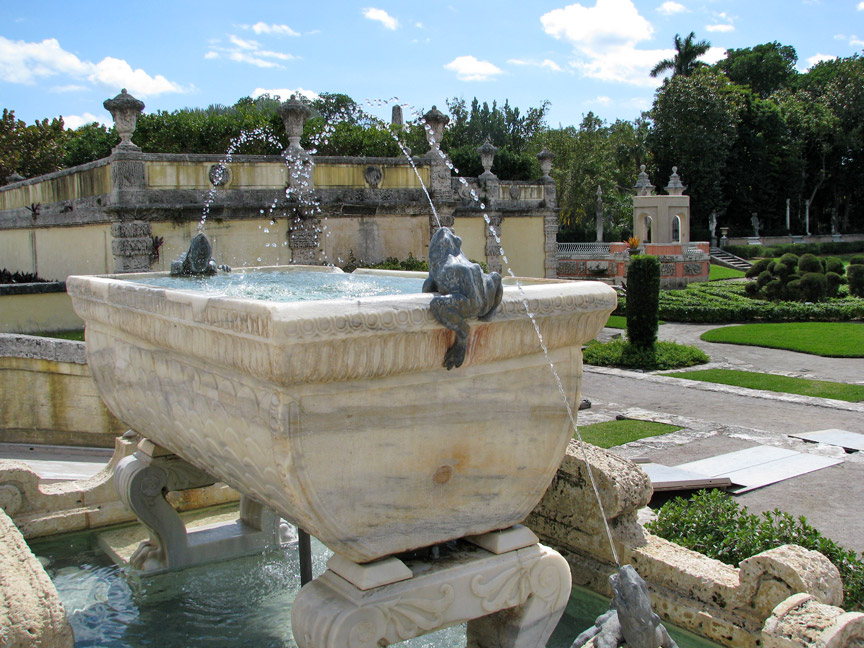
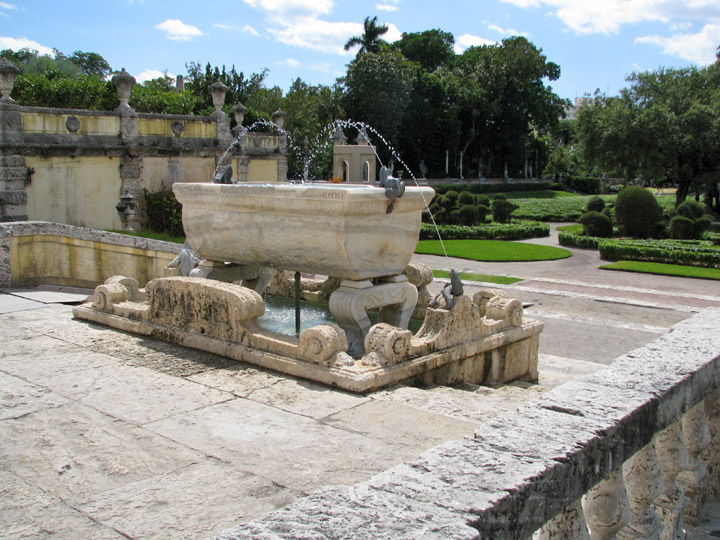
on the garden side
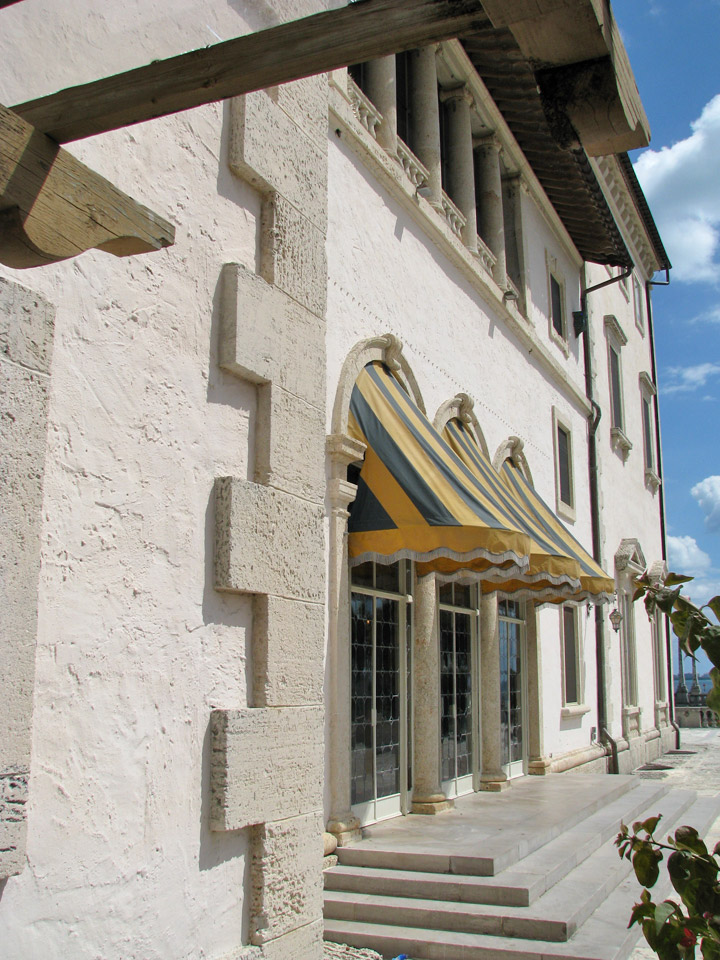
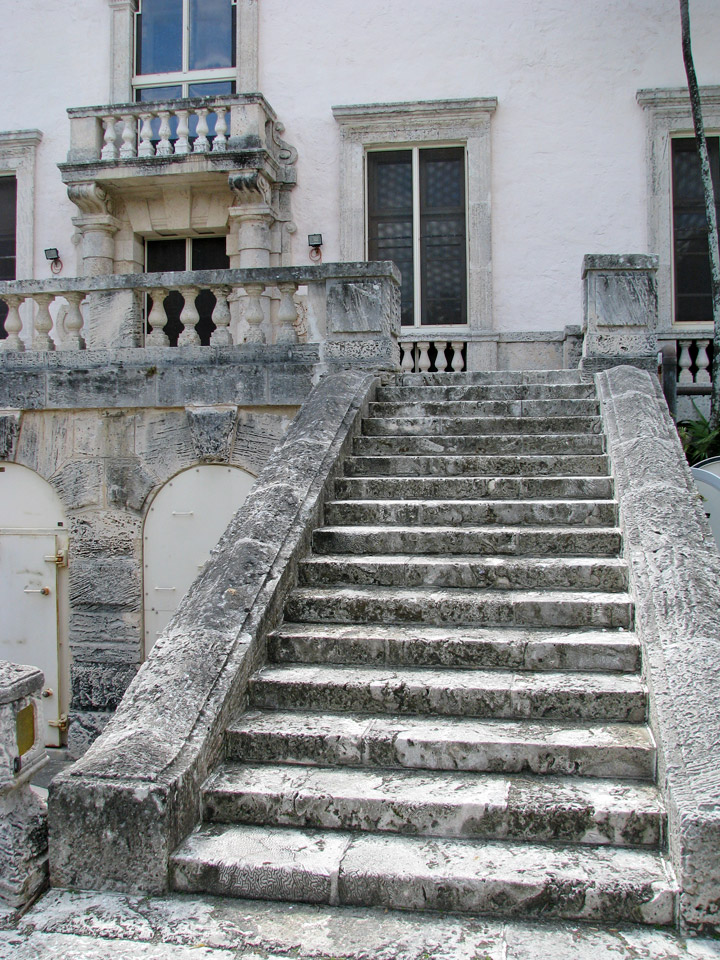
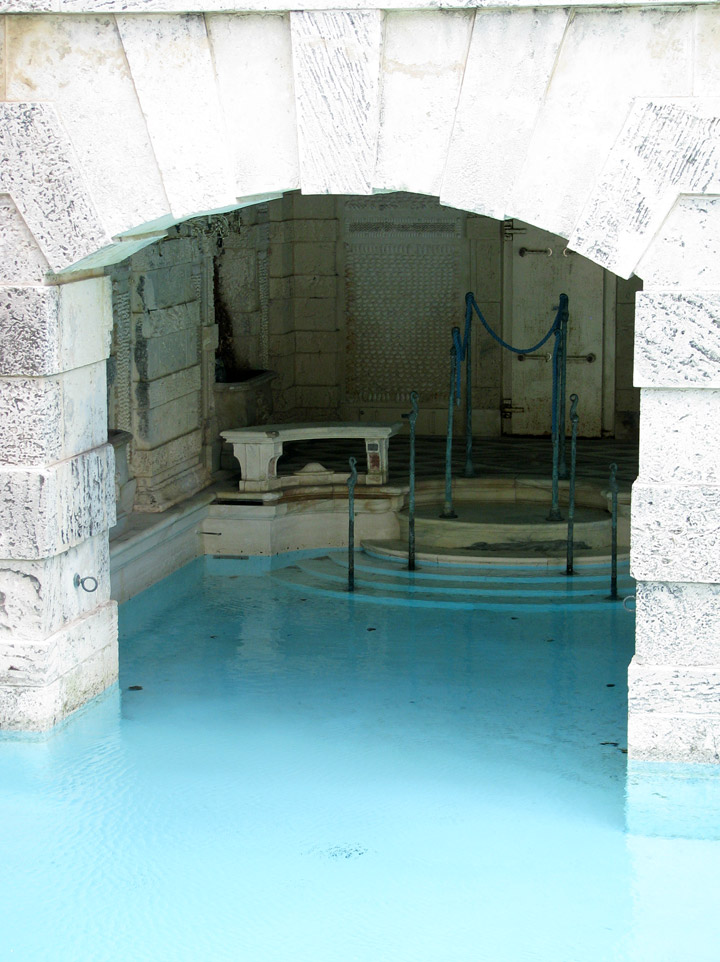
partially covered swimming pool
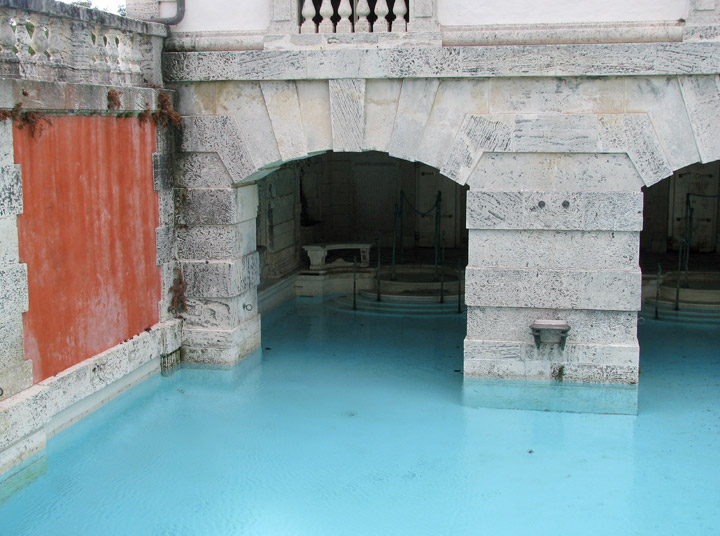
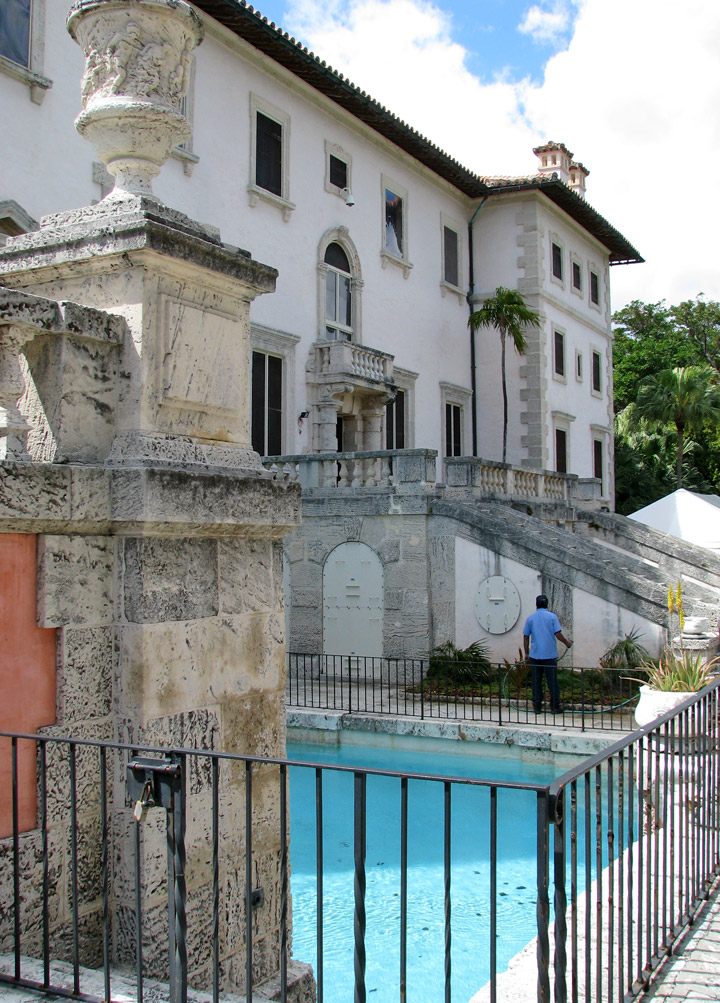
poolside entrance
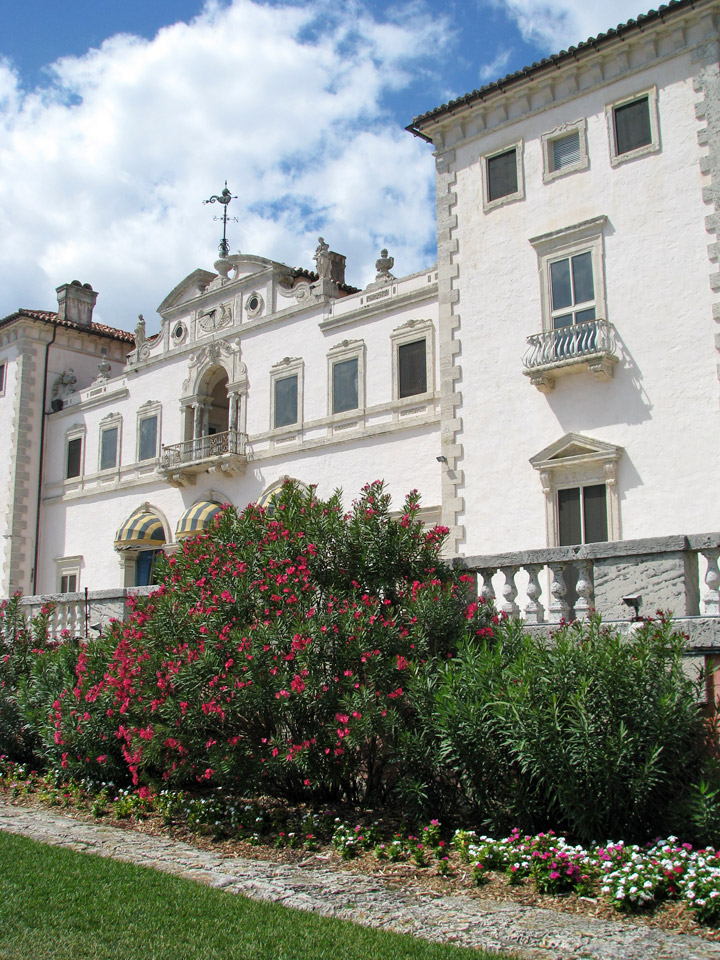

bayside entrance
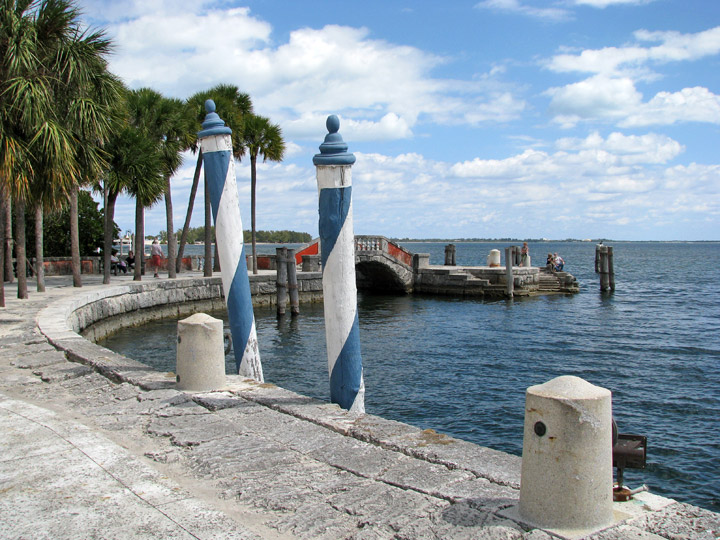
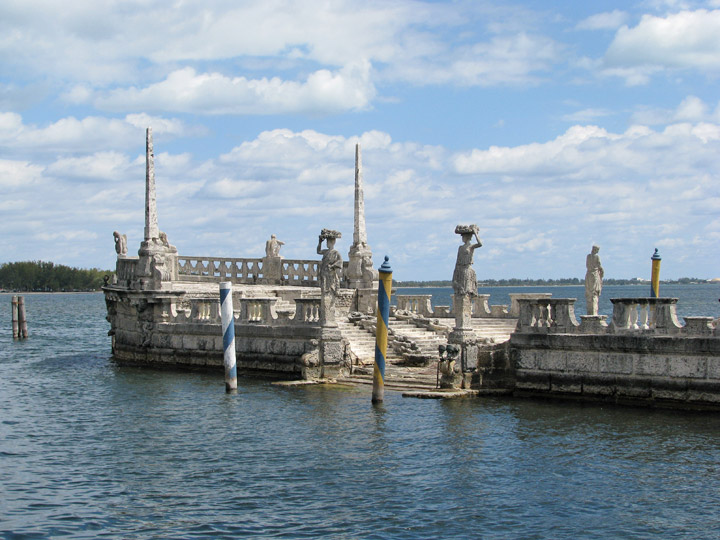
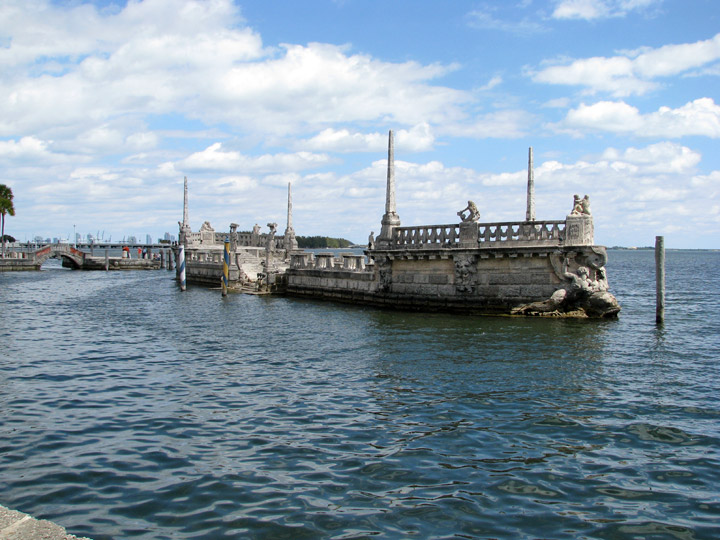

boat dock
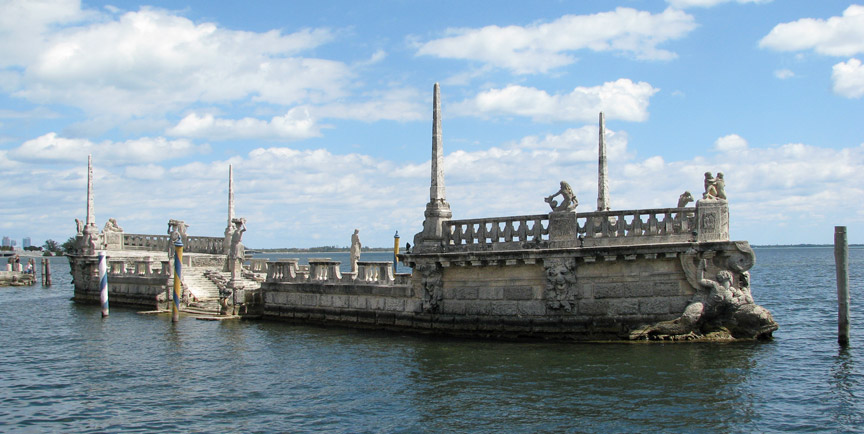
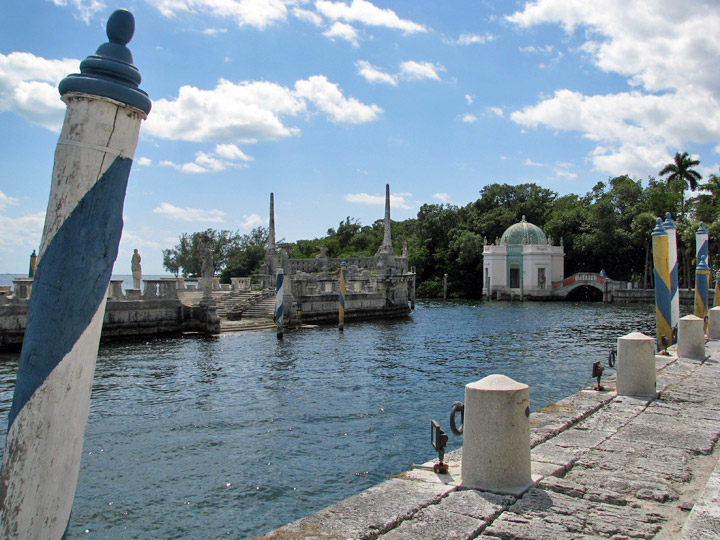
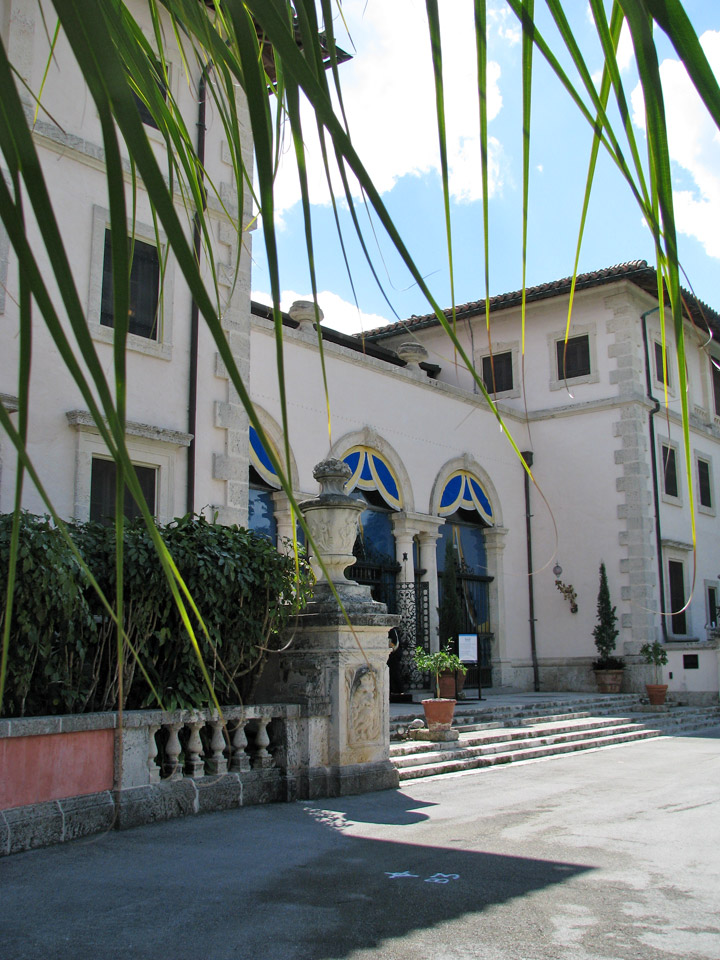
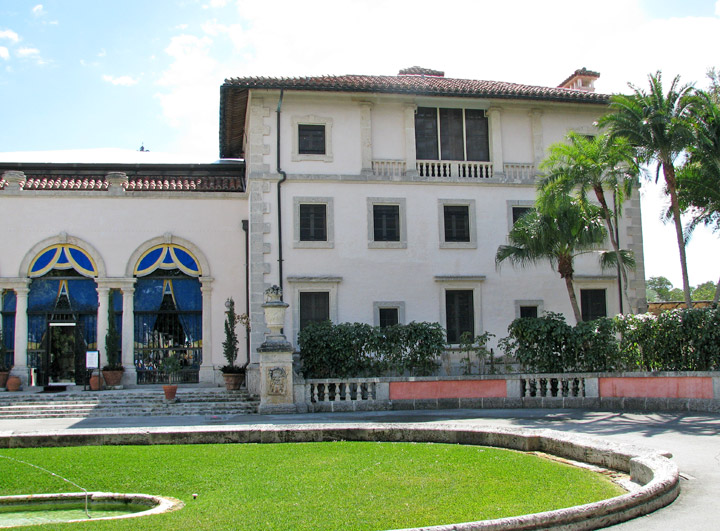

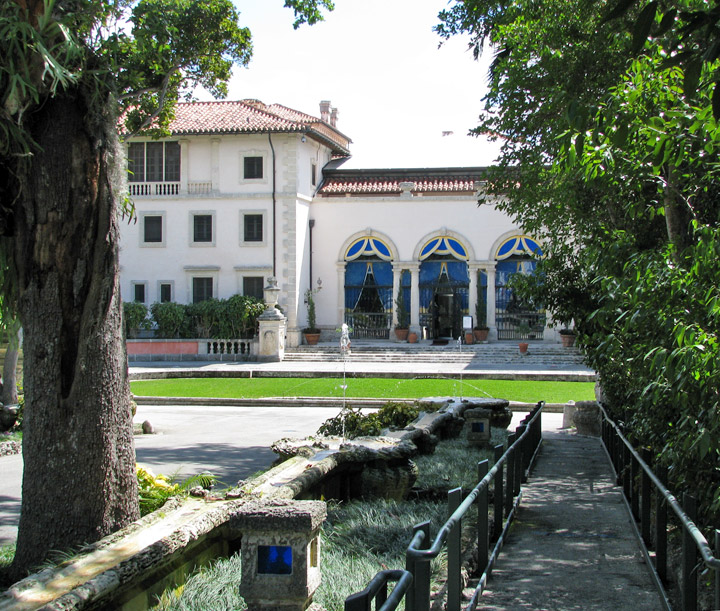
park side entrance
